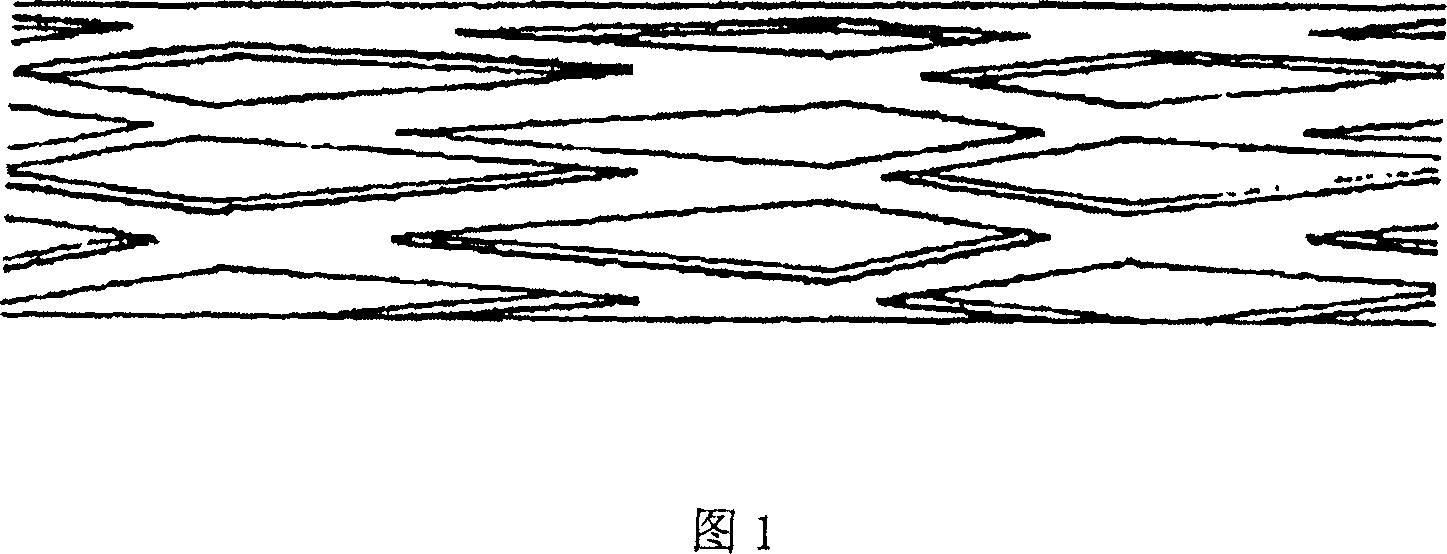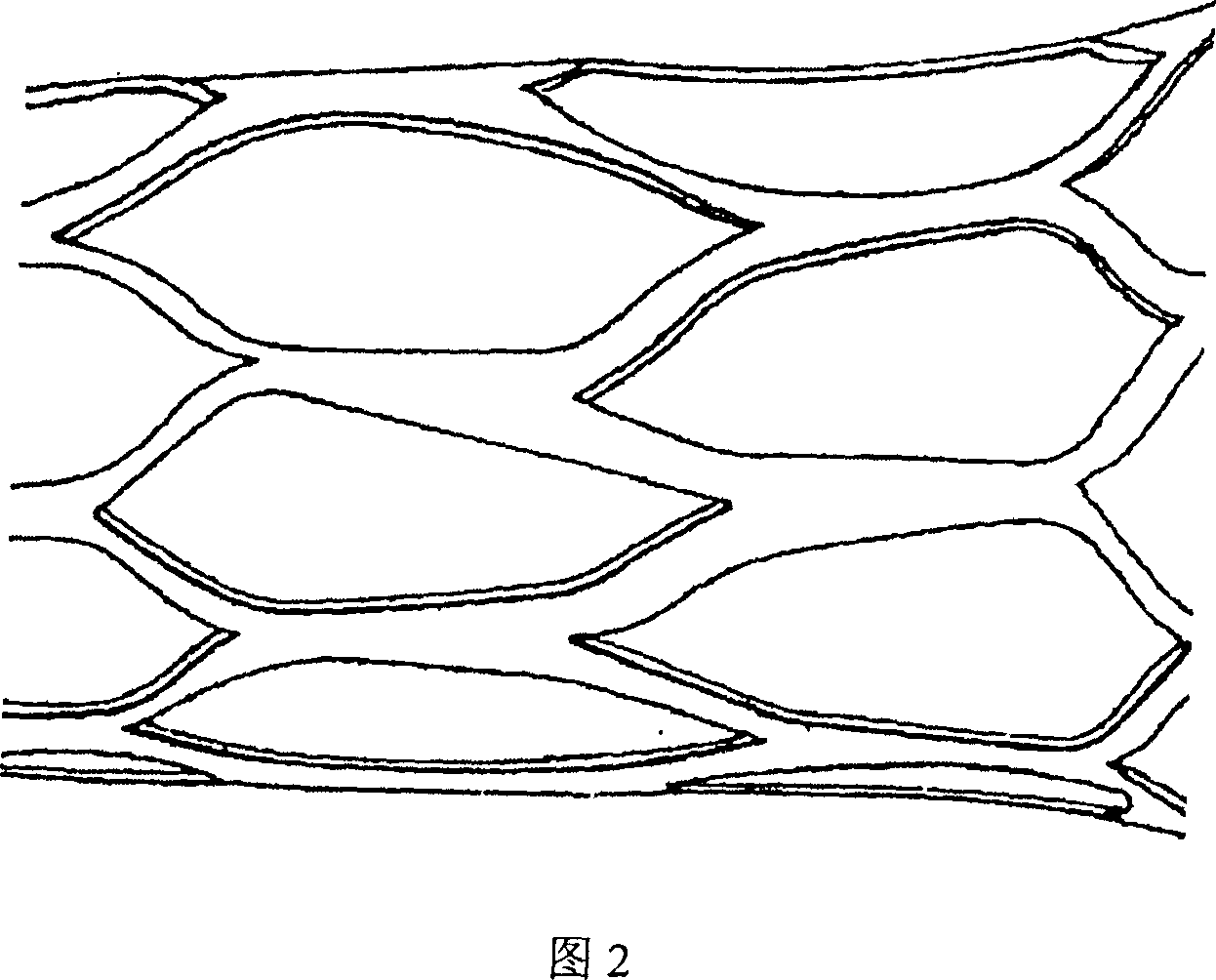Medicine eluted cardiovascular frame and its preparing process
A cardiovascular and drug technology, applied in the field of balloon-expandable stents, can solve problems such as unfavorable popularization and use, and achieve the effects of overcoming intolerance to body fluid washout, preventing late thrombosis, and promoting healing
- Summary
- Abstract
- Description
- Claims
- Application Information
AI Technical Summary
Problems solved by technology
Method used
Image
Examples
Embodiment 1
[0025] Preparation of biodegradable materials:
[0026] Weigh 70 parts of L-LA, 5 parts of GA and 25 parts of ε-CL in a dry polymerization bottle with a stirring bar, and use N 2 Replaced 3 times, placed in an oil bath at 160°C, after melting, added a certain volume of 0.02g / ml stannous octoate chloroform solution (catalyst amount is 0.02wt% of monomer mass), removed chloroform under reduced pressure, and reacted under stirring After 5h, the polymer was dissolved with chloroform and precipitated with ethanol. The molecular weight of the obtained polymer was characterized by gel permeation chromatography (GPC), and the molecular weight was greater than 100,000.
Embodiment 2
[0028] Preparation of heparinized poly(lactic-glycolic acid-amino acids):
[0029] Weigh 0.1mol L-lactide and 0.05mol morpholine dione derivative monomer containing benzyloxy-protected glutamic acid in a dry polymerization bottle with a stirring bar, and use N 2 Replace 3 times, place in 160°C oil bath, after melting, add a certain volume of 0.02g / ml stannous octoate chloroform solution, remove chloroform under reduced pressure, react for 5h under stirring, dissolve polymer with chloroform, and precipitate with ethanol. The obtained polymer is de-benzyloxyl grouped with Pd / C catalyst and hydrogen gas bubbling for 40 to obtain poly(lactic acid-glycolic acid-glutamic acid).
[0030] Heparin contains amino groups and carboxyl groups. Poly(lactic acid-glycolic acid-aspartic acid) is dissolved in a mixed solvent of tetrahydrofuran and water, and a certain amount is weighed (according to the Gel Permeation Chromatography of the polymer, referred to as GPC molecular weight and amino ...
Embodiment 3
[0032] Dissolve 0.1 gram of heparinized poly(lactic acid-glycolic acid-amino acid) and 0.1 gram of anti-restenosis drug rapamycin (Rampamycin) in 5 ml of chloroform, and then soak the balloon-expandable stent shown in Figure 1 in the In the solution for about 30s, take it out and blow dry for later use. The stent can overcome restenosis in the stent and prevent the formation of acute and subacute thrombus. Meanwhile, the heparin has an anti-inflammation effect, can inhibit the foreign body inflammatory reaction of the stent, and promote the healing of the wound on the inner wall of the blood vessel.
PUM
 Login to View More
Login to View More Abstract
Description
Claims
Application Information
 Login to View More
Login to View More - R&D Engineer
- R&D Manager
- IP Professional
- Industry Leading Data Capabilities
- Powerful AI technology
- Patent DNA Extraction
Browse by: Latest US Patents, China's latest patents, Technical Efficacy Thesaurus, Application Domain, Technology Topic, Popular Technical Reports.
© 2024 PatSnap. All rights reserved.Legal|Privacy policy|Modern Slavery Act Transparency Statement|Sitemap|About US| Contact US: help@patsnap.com









